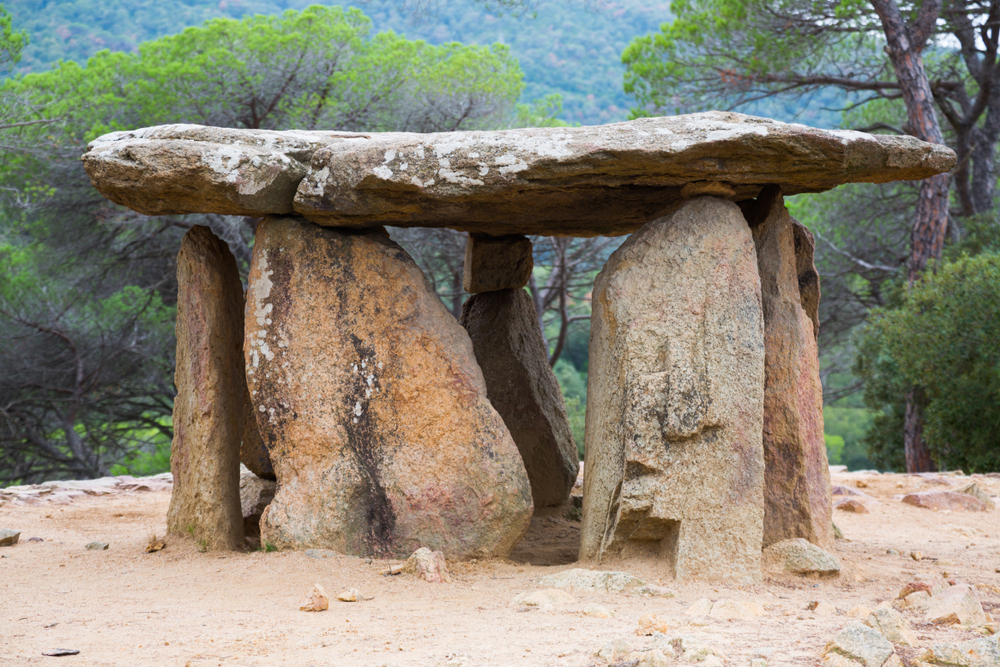Religion: Folk and Traditional Religions
Paganism
Introduction: Paganism is an ancient religion that dates back to pre-Christian times. It was practiced in Spain until the country became Christian under the Roman Empire, after which Islam was the dominant religion for several centuries before Christianity again became dominant.
Origin: Paganism has roots in the pre-Christian religions of Europe. Nature is sacred and a central focus of worship, around which deities are associated. This makes paganism polytheistic in nature.
History: Paganism flourished in pre-Christian times, with temples and shrines dedicated to various gods and goddesses. As nature has a sacred status, the seasonal and astronomical cycles of the earth and sky were times for celebration and rituals.
Adherents: There are no official statistics on the number of adherents to paganism. Historically, it was the dominant practice before the arrival of foreign religions, Christianity and Islam.
Belief System: Paganism is a polytheistic religion that worships a pantheon of gods and goddesses. It also places a strong emphasis on the natural world, around which various deities are associated. Humans are connected to the natural world, which is considered sacred.
Practices: Pagans practice a variety of rituals and ceremonies, including offerings to the gods and celebrating the changing of the seasons and the cycles of the moon and sun.
Rituals, Events, Celebrations
- Festivals and holy days: These occur throughout the year, many of which are tied to the cycles of the seasons and the agricultural calendar.
- Entroido: This is a carnival-like celebration that takes place in February or March and includes traditional costumes, music, dancing, and parades. It is often associated with pagan fertility rituals.
- San Juan Night (Saint John’s Eve): This is a celebration of the summer solstice that takes place on June 24. It includes bonfires—in ancient times to honor the sun and repel evil spirits—as well as fireworks, and offerings to the gods and saints.
Sacred Texts: Pagans do not have a specific sacred text, but draw upon a variety of sources, including ancient myths and legends, poetry, and folk tales.
Places of Worship: Pagans do not have formal places of worship, but may gather in natural settings, such as forests, rivers, and mountains.
Sacred Places: There are a number of sacred places in Spain associated with pagan practices, including various spots in the Pyrenees Mountains. These include caves, springs, and wells as well as mountain peaks. Akelarre, a plain in the province of Navarre, is associated with past pagan ceremonial practices. Spain has several dolmen, two or more large, upright stones with a capstone, usually forming a chamber thought to be used for burials. Guadalperal's dolmen have been called the Spanish Stonehenge.
Leadership Structure: Paganism does not have a formal leadership structure, but may be led by elders or spiritual guides.
Role in Society: Paganism, once the dominant belief system before the arrival of foreign religions, connects Spaniards with their ancient heritage and culture. It is seen as a way to preserve traditional practices and beliefs in the face of modernization and globalization.
Animism
Introduction: Animism is the belief that all things, living and non-living, have a spirit or essence, and that these spirits must be respected and appeased to ensure good health, prosperity, and protection. Spain's indigenous groups held animist beliefs and practices, linked to the country's agricultural past.
Origin: Animism has been practiced in Spain since ancient times, and predates the arrival of Christianity and Islam in the region.
History: Animism in Spain has a long history, with different ethnic groups developing their own variations of practicing the belief. Animism gave meaning to an agricultural lifestyle that was linked to seasons and the phases of the sun and moon.
Adherents: Animism is practiced throughout the country including among indigenous ethnic groups. Exact numbers are difficult to estimate, as many practice animism alongside or as a part of other religions.
Belief System: Animism is based on the belief that all things, including animals, plants, rocks, and even inanimate objects, have a spirit or essence. These spirits can be benevolent or malevolent, and must be appeased through rituals and offerings to ensure good health, prosperity, and protection.
Practices: Animism is practiced through a combination of public and private rituals. Public rituals, such as ceremonies to honor the spirits of ancestors, are often held in sacred groves or open-air shrines. Private rituals, such as offerings made at home altars, are performed by individuals or families.
Rituals, Events, Celebrations
- Ancestor worship: Ancestors are believed to have a continued presence and influence on the lives of their descendants. Offerings and ceremonies are performed to honor and appease them.
Sacred Texts: Animism does not have a central sacred text, but rather relies on oral tradition and the transmission of knowledge through generations.
Places of Worship: Animism does not have specific places of worship, but rather considers certain natural features, such as trees, groves, streams, and rocks, as sacred.
Sacred Places: Many natural features of the Spanish landscape are considered sacred in animism, including mountains, rivers, and forests. These places are believed to be inhabited by spirits and are often the site of ceremonies and offerings.
Leadership Structure: Animism does not have a centralized leadership structure, but rather relies on local community leaders and traditional healers.
Leaders (local) and Dates: Local leaders of animism include traditional healers and community elders.
Role in Society: Animism is an important part of the Spain's history and identity, and it continues to be practiced alongside other religions.
Copyright © 1993—2025 World Trade Press. All rights reserved.

 Spain
Spain 
